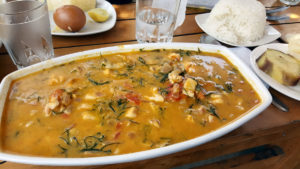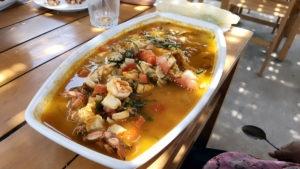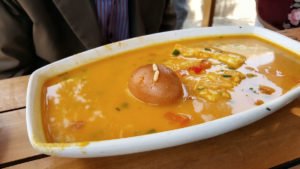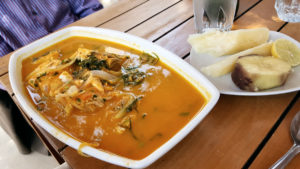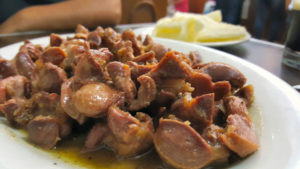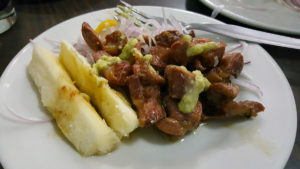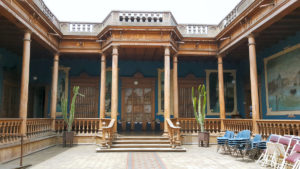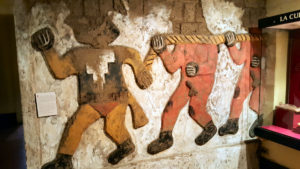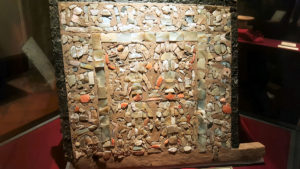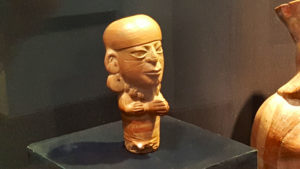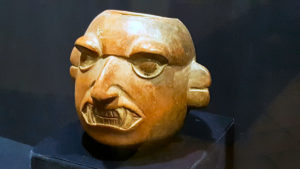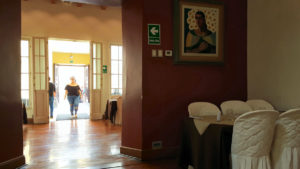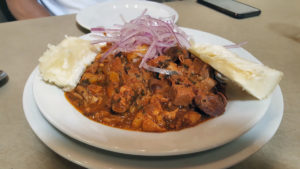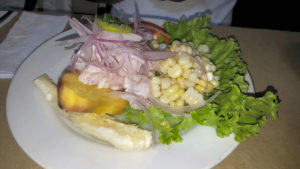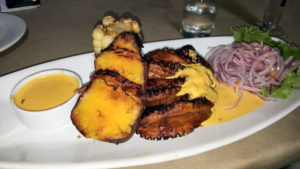While Trujillo has a public transit system of small buses and vans, it’s not a coordinated effort. Pretty much every vehicle is individually owned (Henry’s older sister owned one for years), and runs whatever route they choose – to some extent there are official routes that they can bid on, but many, especially the vans, or combis, just decide where they want to run back and forth between, and just do so, charging whatever they choose to (it’s always really cheap). But that also means unless you know a particular bus or van, you have to sort of wing it to figure out which one to take. Taxis are plentiful, and reasonably cheap – it’s a negotiation each time. And then, for local neighborhood trips, there are mototaxis – motorcycles with a two-seat, two-wheel carriage attached to the back. Even cheaper.
Just some highlights from the last couple of days….
A revisit out to Moche, the pueblo that borders onto the Huacas de Sol y Luna, which we visited many moons ago. And, a return to a family favorite, which when I last mentioned it, I referred to as a “roadside stand”. El Camaroncito Mochero (booklet.primary.warping) is really a roughly 70 seat outdoor restaurant alongside the road. This time we ordered a bunch of different soups – a picante de mariscos, parihuela de tollo, chupe de tollo, and sudado de corvina. They’re all similar in many ways, with a base of ají amarillo chilies and some mix of fish and/or shellfish, but they each have their own flavor profiles. All really good.
A panoramic picture of the Plaza de Armas, the central plaza, at night. It’s actually a quite nice place to while away a bit of time in the evenings, there are always musicians and dancers and people strolling about and enjoying themselves.
I had done a bit of online sleuthing in advance of this trip. I know that Henry’s other sister, Maria, loves mollejitas, chicken gizzards, which are a classic dish of this part of Perú (and probably many other parts too, but here, they’re practically revered), either prepared al ajo, with garlic, or al sillao, with soy. We always go to her favorite, and cheap spot, but this time I wanted to see if we could go a step above. The general consensus from foodies in the know was that the best in town are to be found at Las Mollejitas de San Andres, a short 10 minute walk from the plaza. At least based on the three of us, the best we’ve had at any Peruvian restaurant. Only negative, we really wanted to get an order of their fried yuca, which everyone swears by, but we’d finished off two “family size” platters of gizzards in garlic, plus their accompanying boiled yuca and onion-chili salad, and they’d still not arrived at the table. We cancelled the order, paid the tab (roughly 140 soles/$43 with the two platters, some beers, and tip) – and really, we shouldn’t have ordered that second platter – we made it through, but damn that was a lot of food.
A visit to the Museum of Archaelogy and Anthropology at the National University of Trujillo. While reasonably well organized, it’s kind of lacking in information, and what there is is all in Spanish. Then again, it’s a university museum, not a regular public or government, or even private one. It’s a mix of stuff from the university’s archaeology and anthropology departments, plus a lot of stuff on loan from other museums. Still, for 5 soles, less than $2, it’s worth a visit.
And, lunch at El Mochica, downtown, an ostensibly upscale restaurant offering slightly fancied up versions of local fare and a stretch beyond. It’s a beautiful old building, but much of the “fancy” is facade – the cloth draped chairs are cheap plastic lawn chairs underneath, the tables somewhat rickety. But service is friendly and efficient, and the food is good. We shared a sangrecita, a dish I’ve only tried once before, when we were in Chiclayo, years ago – it’s basically a stew of goat innards and blood (what we had there was called a chirimpico, which is basically the sangrecita served with vegetables and rice as a main plate rather than an appetizer. The one in Chiclayo was better.
A decent ceviche of sea bass, it just could have used more punch all around. And a quite good whole octopus (almost a pound), grilled anticucho style – marinated in chilies, beer, and spices and then grilled – with a creamy yellow chili sauce. Another take on a popular dish from up in the Chiclayo area. And certainly a more elegant presentation.
